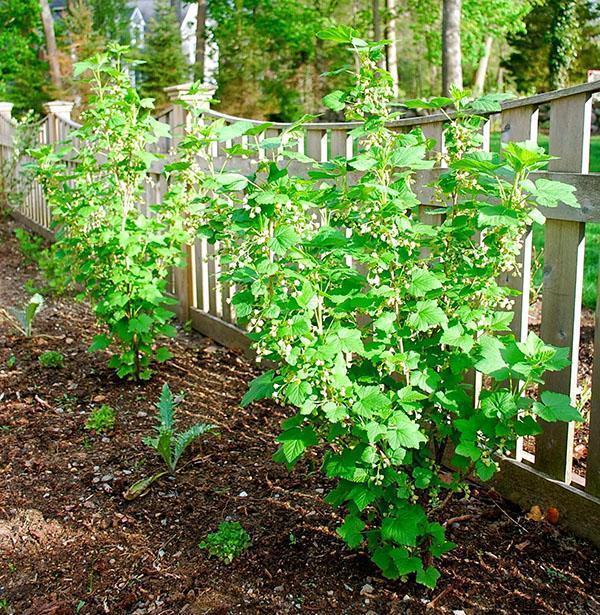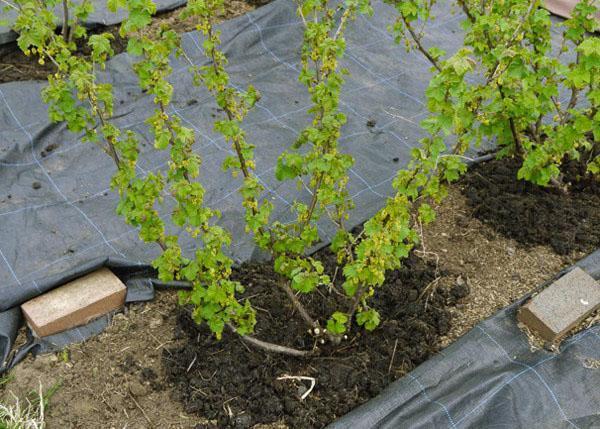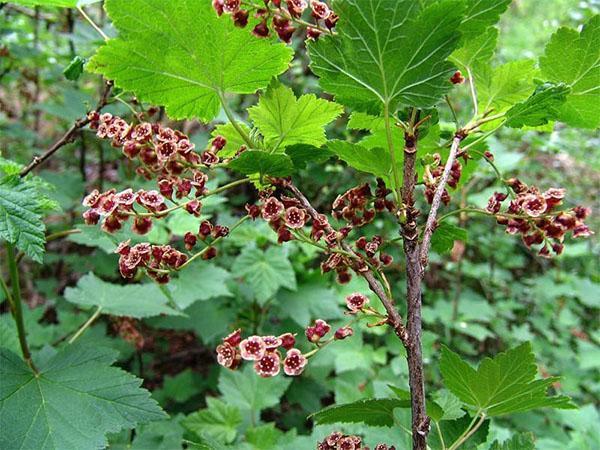Fertilizing plantings of currants for a good harvest
 What the harvest on currants will be next year depends on the growth of the bush in the current season. Therefore, feeding currant plantings is an integral part of annual care, no less important than watering, soil cultivation and pruning.
What the harvest on currants will be next year depends on the growth of the bush in the current season. Therefore, feeding currant plantings is an integral part of annual care, no less important than watering, soil cultivation and pruning.
The stronger and larger the one-year-old branches, the more ovaries form on them. But the berry will be sweet and large only if it receives enough nutrition, sun and moisture during ripening. The root system of all currant varieties is located near the surface. On the one hand, this requires special attention when loosening the soil, and on the other hand, it facilitates plant feeding, making it more effective.
What fertilizers do currants need? When and how to make them?
Read also the article in the topic: urea fertilizer application in the garden application in autumn!
Feeding young berry crops

When the currants begin to bear fruit, in addition to nitrogen, it will need feeding with potash and phosphorus compounds. They are brought in in the fall based on a young bush:
- 40-50 grams of superphosphate;
- 10-15 grams of potassium sulfate.
At the same time, the currants are fed with organic matter so that 4–6 kg of humus or mullein infusion gets into the soil.
Related article: golden currant - planting and care in the country!
Fertilizing adult currant plants
 The timing and frequency of fertilization for adult bushes largely depends on the type of soil on which the plantings are laid. Dense soil retains nutrients longer in the layers where the roots of the bush are located. And through light, for example, peaty or sandy fertilizers, they quickly go deep into the depths and become inaccessible to plants.
The timing and frequency of fertilization for adult bushes largely depends on the type of soil on which the plantings are laid. Dense soil retains nutrients longer in the layers where the roots of the bush are located. And through light, for example, peaty or sandy fertilizers, they quickly go deep into the depths and become inaccessible to plants.
Therefore, from the fourth year of life, nitrogen fertilizers, which accelerate the growth of greenery and shoots, are applied annually at the rate of 20–25 grams of urea per plant. Moreover, for a more efficient use of feeding, it is often divided into two steps.
In the spring, 2/3 portions are added under the bushes, which makes it possible for the currants to give foliage together, bloom and form ovaries. And the remaining amount falls into the ground after flowering. This top dressing will support the shrub as the berry begins to pour.
Phosphoric and potash fertilizers on dense soils, it is possible to apply not every year, but at intervals of 2-3 years in a vein or in autumn so that the plant has:
- 120-150 grams of superphosphate;
- 30-45 grams of potassium sulfate.
Organic fertilizers can also be applied intermittently. But if there are sandy soils under the plantings, the gardener needs to be prepared for annual feeding of currants. Additional summer, traditional and foliar dressings, which are combined with watering or apply fertilizers in liquid form, will not harm.
 In this case, the application rates of mineral fertilizers are somewhat reduced in order not to cause burns to the root system and overfeeding of berry bushes. It is especially important not to overfeed the currants with nitrogen.Its excess causes a strengthened mouth of the green mass to the detriment of the quantity and quality of the berries. In addition, powerful one-year-old shoots do not have time to ripen by autumn and often die from winter frosts.
In this case, the application rates of mineral fertilizers are somewhat reduced in order not to cause burns to the root system and overfeeding of berry bushes. It is especially important not to overfeed the currants with nitrogen.Its excess causes a strengthened mouth of the green mass to the detriment of the quantity and quality of the berries. In addition, powerful one-year-old shoots do not have time to ripen by autumn and often die from winter frosts.
Trace elements for berry bush
In addition to the main nutrients, microelements are vital for currants. Their plants are received in June. In this case, take on a bucket of water:
- 1-2 grams of copper sulfate;
- 2-2.5 grams of boric acid;
- 5-10 grams of manganese sulfate;
- 2-3 grams of zinc sulfate and the same amount of ammonium molybdenum.
If the gardener has complex fertilizers with microelements for berry bushes, it is convenient to use them. The prepared solution is applied under the crowns at a distance of 20–30 cm from the root. For better absorption, it is in this zone that shallow furrows are made around the bushes, which are sprinkled and covered with mulch on the fertilizing field. It is necessary to apply fertilizers in this way into moist soil, therefore, the shrubs are watered first.
 Taking care of the nutrition of the currant bushes before the formation of the berries and during their ripening, many novice gardeners lose sight of the fact that after harvest the plants also need to be taken care of. It is at this time that the flower buds of the next year are laid, new shoots are formed and grow stronger.
Taking care of the nutrition of the currant bushes before the formation of the berries and during their ripening, many novice gardeners lose sight of the fact that after harvest the plants also need to be taken care of. It is at this time that the flower buds of the next year are laid, new shoots are formed and grow stronger.
Fertilizers for currants can be applied with dry granules randomly or in liquid form, adhering to a zone equal to the diameter of the crown.
At the same time, it is important to loosen the trunk circle regularly, trying not to damage the roots, watering and weeding. Removing weeds is extremely important, since they not only draw out the moisture necessary for currants from the soil, but also take away the main components of nutrition and trace elements from cultivated plantings.